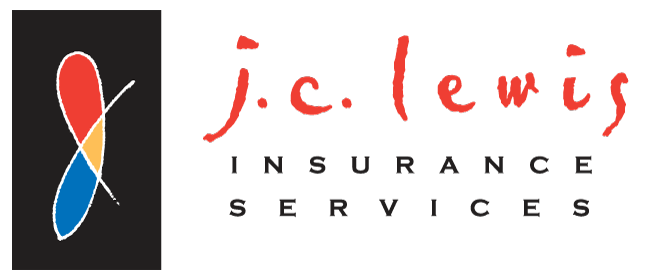In the complex and turbulent health care coverage universe, Consumer-Driven Health Plans (CDHP), also known as Consumer-driven healthcare (CDHC), is relatively new.
In 2003, the passage of federal legislation provided tax incentives in the form of Health Savings Accounts (HSAs) for those who choose a CDHP. That year, the Medicare Prescription Drug, Improvement, and Modernization Act, also called the Medicare Modernization Act or MMA, became federal law and enacted the largest overhaul of Medicare in the program’s history.
One component of the law provided a new Health Savings Account (HSA). This law replaced and expanded the previous Medical Savings Account law by expanding allowable contributions and employer participation.
Like all legislation, the HSAs have both advocates and detractors.
Proponents have argued that most consumers will pay less over time with a CDHP because of lower monthly premiums and because of HSAs and other products foster competition in the healthcare system, which lowers prices and improves service.
Critics of CDHP and the HSAs contend that they cause consumers to avoid needed and appropriate healthcare, particularly lower-income and less educated consumers, because of the cost burden and the inability to make informed healthcare choices.
Understanding Consumer-Driven Health Plans
Essentially, consumer-driven health plans (CDHP) are health insurance plans that have high deductibles to protect members from more costly medical expenses. The deductible costs can be covered, partially or in whole, when members use health savings accounts (HSAs) or similar medical payment accounts to pay routine healthcare expenses directly.
According to HSACenter.com,
“Your HSA dollars can be used to help pay the health insurance deductible and qualified medical expenses, including those not covered by health insurance, like dental and vision care.”
Plan members can keep any unused balance or “rollover” at the end of the year to increase future balances or to invest for future expenses. Once the calendar-year deductible is met, the health insurance plan pays the remaining covered expenses based on the terms of the plan. Some plans pay 100 percent of covered expenses after the calendar-year deductible is met.
Consumer-driven health plans are subject to the requirements of the Affordable Care Act, which mandates that routine or health maintenance claims must be covered, with no cost-sharing (i.e. copays, co-insurance, or deductibles) to the patient.
A report published by the U.S. Bureau of Labor Statistics explains how these plans work for users:
“In terms of payment methods, CDHPs are often referred to as three-tier payment systems, consisting of a savings account, out-of-pocket payments, and an insurance plan. The first tier is a pretax account that allows employees to pay for services using pretax dollars. The account may be funded by the employer or the employee, depending on the type of account. The funds from this account can be used to satisfy the insurance plan deductible. The second tier is the difference, or the “coverage gap,” between the amount of money in the individual’s pretax account and the deductible. The amount that is not covered by the pretax account must be covered by the insured. If health care expenses exceed the deductible amount, then the third tier, the high-deductible health insurance plan, kicks in.”
Once the out-of-pocket maximum is reached, CDHPs operate similar to a typical PPO plan with the health plan paying all further costs.
The Benefits of Consumer-Driven Health Plans
Opting for a consumer-driven health plan (CDHP) can provide benefits for both employees and their employers. Although this type of plan is likely not a best fit for many employees, having it available for healthy, younger individuals with higher health literacy and a desire to control more of their spending may be a positive choice.
For employers, providing an option of consumer-driven health plans (CDHP) can bring the following benefits:
- Increased employee satisfaction: Participants who don’t typically require medical care may pay less for a CDHP. And when an employee pays less for coverage, there’s more money in their paycheck.
- Save on premium costs: Generally speaking, premium costs associated with CDHPs are lower than other types of healthcare plans. With a lower premium cost per employee, more money remains with the company.
- Reduced medical costs: Participants share in out-of-pocket costs, which allows them to understand the cost of health care. Subsequently, this encourages them to make more informed decisions regarding the care they receive.
- Better informed health care choices: CDHP users are more likely to participate in health risk assessments and health promotion programs than traditional plans.
According to BlueCross BlueShield of Massachusetts,
“Consumer-directed health plans combine financial engagement and comprehensive support to move employees toward becoming empowered consumers of health care services. This approach can help your company manage costs over the long term and be an effective strategy for delivering quality, sustainable coverage for your workforce.”
Although being enrolled in a CDHP requires greater deductible costs and out-of-pocket maximum expenses, high-deductible health plans also provide the advantage of having lower monthly premiums, as well as potential tax savings by reducing taxable income through Health Savings Accounts or HSAs.
In fact, an HSA provides employees with several opportunities for tax savings:
- HSA contributions are tax-deductible
- HSA funds used to pay for qualified medical expenses can be withdrawn tax-free
- HSA account funds generally grow tax-free each year
In addition, because of the lower employee premiums available through CDHP coverage, small business employers pay less in terms of their overall required cost-sharing contributions, which can result in considerable savings.
The Future of Consumer-Driven Health Plans: Trends for 2025
Consumer-driven health plans (CDHPs) are evolving as new trends and policies shape the healthcare landscape. With healthcare costs continuing to rise, many employers are turning to high-deductible health plans (HDHPs) with health savings accounts (HSAs) to provide employees with cost-effective coverage options. In 2025, expect to see a surge in digital health tools integrated with CDHPs, offering real-time cost transparency, AI-powered health recommendations, and automated HSA contributions based on spending patterns. Employers are also prioritizing telehealth benefits, allowing employees to access virtual care at lower out-of-pocket costs.
CDHPs and Employee Financial Wellness
One of the biggest concerns surrounding CDHPs is whether employees can afford the higher deductibles. In response, many companies are offering HSA matching programs—similar to 401(k) employer contributions—to help offset medical costs. Additionally, financial wellness programs are being integrated with CDHPs, educating employees on how to maximize HSA benefits, budget for healthcare expenses, and make informed decisions about medical care. Employers are also adopting direct primary care (DPC) partnerships, where employees pay a flat monthly fee for unlimited access to primary care, reducing reliance on expensive hospital visits.
Personalized Health Incentives in CDHPs
CDHPs are moving beyond a one-size-fits-all approach by leveraging personalized health incentives. In 2025, expect to see employers rewarding healthy behaviors with HSA contribution bonuses or premium discounts for participating in preventive screenings, fitness programs, and chronic disease management. Some companies are even introducing AI-driven health engagement platforms, which analyze individual health data and provide tailored recommendations to reduce long-term medical expenses. These incentives not only encourage proactive healthcare management but also help employees optimize their CDHP benefits for maximum savings.
AI-Driven Decision-Making in Consumer-Driven Health Plans (CDHPs)
By 2025, artificial intelligence (AI) is transforming how consumers interact with their healthcare plans. Smart algorithms analyze spending patterns, predict future medical costs, and offer real-time suggestions on when to use HSA funds versus paying out of pocket. AI-driven tools also help members compare healthcare providers based on cost and quality, ensuring they get the best value for their care. Expect AI-powered chatbots and virtual assistants to play a bigger role in guiding consumers through the complexities of CDHPs.
Legislative Changes Affecting HSAs and CDHPs in 2025
With healthcare costs rising, lawmakers are exploring ways to make CDHPs more accessible. Proposed legislation aims to increase HSA contribution limits, allowing individuals and families to save more pre-tax dollars for medical expenses. Additionally, there’s a push to expand the list of HSA-eligible expenses to include mental health services, fitness programs, and even certain over-the-counter medications. These changes could make CDHPs an even more attractive option for cost-conscious consumers.
Employer Strategies to Boost CDHP Adoption
Many employees hesitate to enroll in CDHPs due to high deductibles, but companies are finding new ways to ease the transition. In 2025, expect to see more employer-funded HSA contributions, wellness incentives, and hybrid plans that combine elements of traditional insurance with CDHP benefits. Some businesses are even offering “health stipends,” giving employees extra funds to cover out-of-pocket costs while promoting smarter healthcare spending.
Choose a Local Expert for Your Health Insurance Needs
JC Lewis Insurance is a firm made up of expert brokers offering California employers health insurance plans only from leading health insurance carriers licensed to do business in California.
In addition, we are licensed and certified by each of these insurance carriers to offer coverage to individuals, families, and small group employers in addition to Medicare supplemental and prescription drug plans for Seniors. We assist small business employers with the initial set-up, annual renewal, and on-going maintenance needed.
If you’re a small business owner looking to provide insurance coverage for your employees, you likely have many questions and concerns. Bring your questions about small group insurance and you can be confident that JC Lewis Insurance Services will help you find the right solution.




